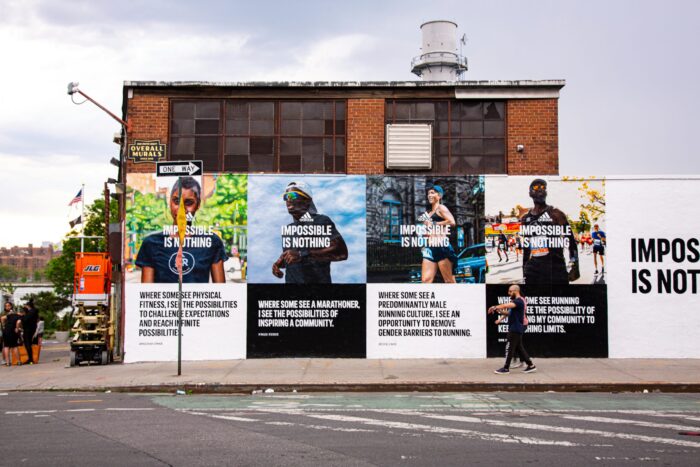We’re all bombarded with marketing messages every single day.
Scrolling through social media? Ads.
Checking your emails? More ads.
Walking down the street? You guessed it, more ads everywhere.
It’s enough to make your head spin, right?
With so many businesses vying for our attention, it’s becoming harder than ever for brands to actually connect with potential customers. I mean, how many marketing messages do you remember from yesterday? Probably not many. That brings us to the topic of today.
Creativity in marketing has become more important than ever. The real struggle for brands and businesses is saying something their audience would listen to. Something that makes people stop mid-scroll and think, “Huh, that’s interesting.” That’s the power of creative marketing in a nutshell.
What Exactly Is Creative Marketing?
Creative marketing goes beyond traditional advertising approaches by implementing innovative, original ideas that capture attention and drive engagement. It’s the difference between a forgettable flyer and a campaign that people can’t stop talking about.
At its core, creative marketing is about solving problems in unexpected ways. It combines strategic thinking with imaginative execution to deliver messages that not only reach audiences but actually connect with them on a deeper level.
But why should businesses care about injecting creativity into their marketing efforts? Isn’t it enough to just highlight your products or services and call it a day?
Why Creativity Matters in Modern Marketing?
Cuts Through the Noise
The average Australian is exposed to between 4,000 and 10,000 advertisements daily. That’s a staggering amount of competition for attention.
Creative marketing provides the edge needed to stand out in this sea of messages. Think about which advertisements you remember. Chances are, they’re the ones that surprised you, made you laugh, or connected with you emotionally.
Builds Stronger Brand Recognition
When your marketing zigs while everyone else zags, people notice. Creative campaigns stick in consumers’ minds and build stronger associations with your brand.
Remember the “Share a Coke” campaign that personalised bottles with names? That simple, creative twist turned ordinary soft drinks into must-have items and generated millions of social media impressions.
Improves ROI
Creativity isn’t just nice to have anymore. It’s great for business. According to research, creative campaigns are more effective at driving key performance metrics than their non-creative counterparts.
They typically generate higher engagement rates, better conversion rates, and ultimately deliver a stronger return on investment. Penny wise but pound foolish is the approach that skimps on creative development.
Fosters Emotional Connections
Have you ever felt genuinely moved by an advertisement? That’s the power of creative marketing at work. When marketing taps into authentic human emotions (humour, nostalgia, or inspiration), it creates connections that transcend the transactional relationship between brand and consumer.
How Can Brands Incorporate More Creativity?
1. Understand Your Audience Deeply
Creative marketing that resonates begins with thorough audience understanding. What motivates your customers? What are their pain points? What types of content do they engage with? The better you understand your audience, the more effectively you can create marketing that speaks directly to them.
Is your marketing speaking to who your customers actually are, or who you think they should be? This distinction makes all the difference in creating relevant creative content.
2. Embrace Storytelling
Humans are hardwired to respond to stories. They’re how we make sense of the world and connect with others. Brands that weave compelling narratives into their marketing create memorable experiences that customers want to be part of.
Consider how your brand can tell stories that highlight not just what you sell, but why it matters and how it improves lives. This narrative approach transforms features and benefits into meaningful experiences.
3. Experiment with Different Formats and Channels
Creative marketing often means venturing beyond your comfort zone. This might involve experimenting with emerging platforms, trying new content formats, or reimagining how you use established channels.
Could your B2B service be explained through an engaging animation? Might your retail products shine in a series of behind-the-scenes Instagram Stories? Sometimes, the most creative marketing comes from simply presenting familiar information in unfamiliar ways.
4. Collaborate Across Disciplines
Some of the most innovative marketing emerges when different perspectives collide. Consider bringing together team members from various departments, or even customers, to brainstorm ideas. These cross-pollination sessions often yield insights and approaches that siloed thinking would miss.
5. Take Calculated Risks
Creativity requires courage. Not every creative idea will resonate, and that’s okay. The brands that stand out are those willing to take calculated risks rather than playing it safe all the time.
Have you noticed how the most memorable campaigns often push boundaries in some way? They challenge conventions, surprise audiences, or present familiar concepts from fresh angles.
When to Seek Professional Creative Help
While in-house marketing teams can certainly generate creative campaigns, sometimes bringing in specialists can elevate your efforts to new heights. If you’re eyeing options, AmperBrand creative agency brings a fresh perspective, specialised expertise and dedicated resources to developing truly distinctive marketing.
Partnering with creative professionals is particularly valuable when:
- You’re launching a new product or entering a new market
- Your current marketing efforts aren’t delivering the results you need
- You’re undergoing a brand refresh or repositioning
- You need to differentiate in a highly competitive market
- Your internal team needs supplementary creative firepower
Creative agencies combine strategic thinking with artistic execution to develop marketing that not only looks great but actually achieves business objectives. They stay ahead of trends while remaining grounded in what works, providing the perfect balance of innovation and practicality.
Measuring Creative Success
How do you know if your creative marketing is actually working? While creativity itself can seem subjective, its impact is measurable through various metrics, such as engagement rates across channels, brand recall and recognition improvements, conversion rate changes, social sharing and earned media, and overall campaign ROI.
By tracking these metrics, you can refine your creative approach over time, doubling down on what resonates with your audience and adjusting what doesn’t.
—–
As technology evolves, so do the possibilities for creative marketing. Augmented reality, interactive experiences, personalisation and other innovations open new avenues for brands to connect with audiences in meaningful ways.
However, the fundamental principles remain unchanged: understand your audience, tell compelling stories and deliver authentic messages that resonate emotionally. No matter how sophisticated the technology becomes, creativity will always be rooted in human connection.


